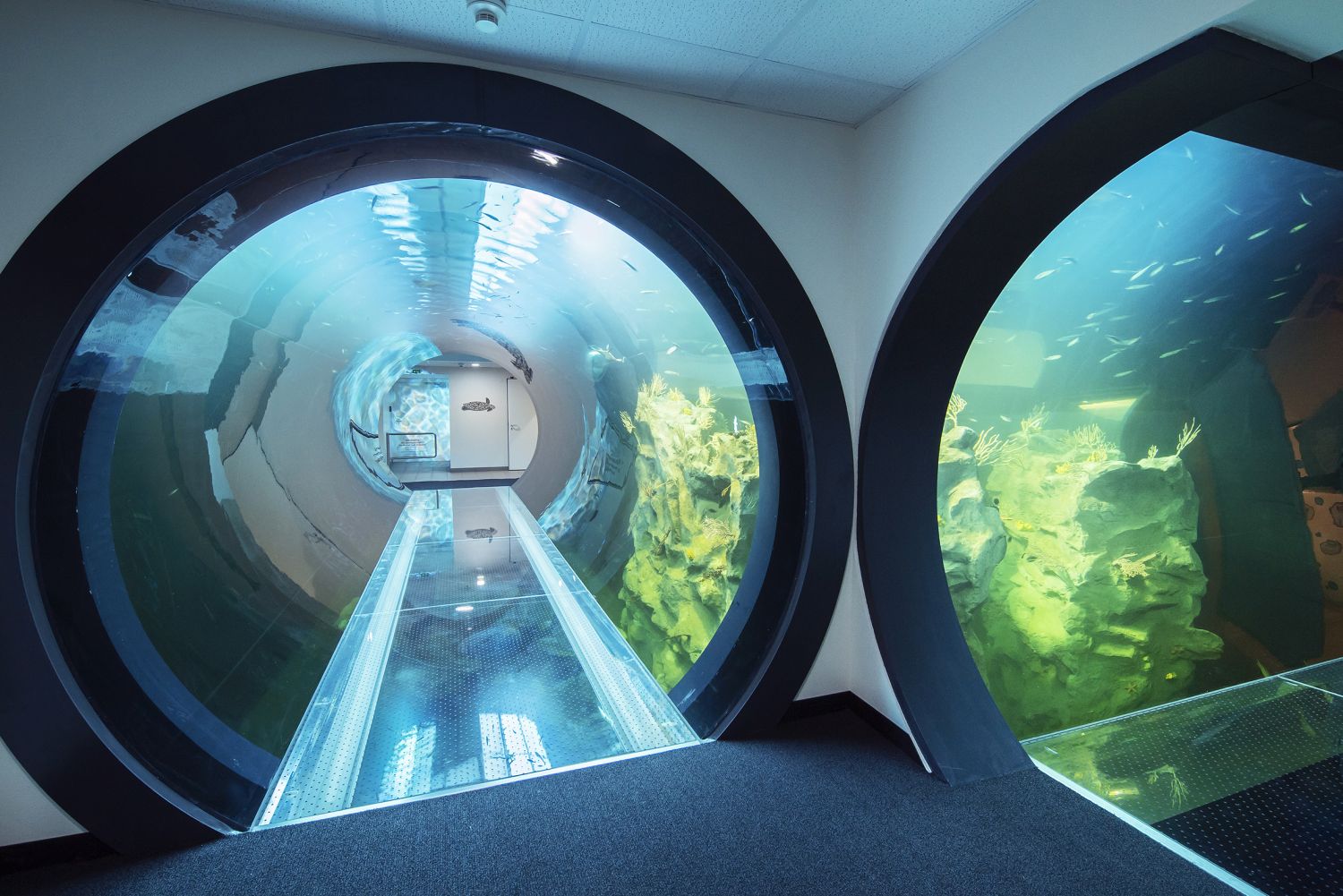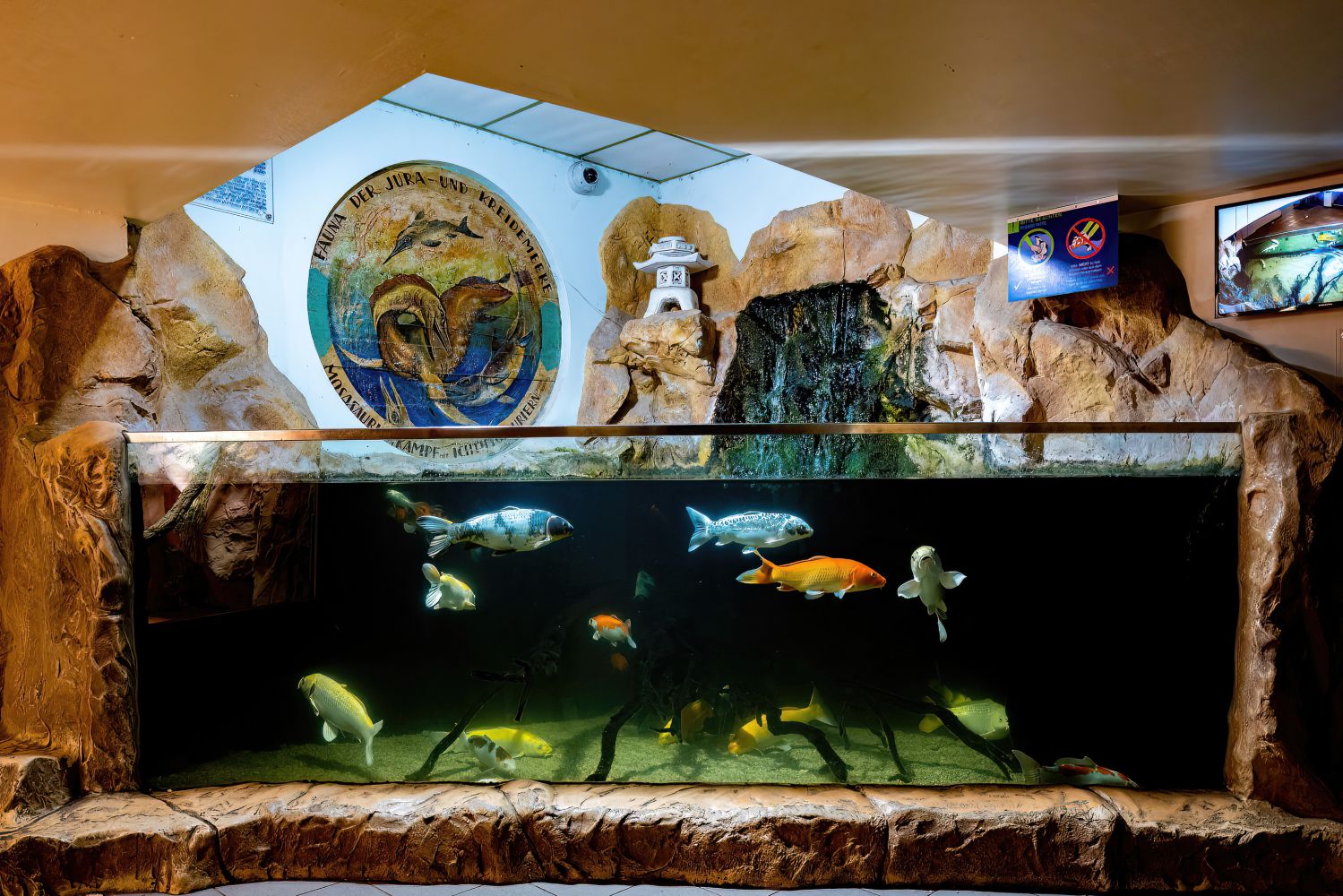Floor EG
Welcome to the Haus des Meeres! On the following pages we would like to introduce you to our zoo in detail – click through the floor plan and prepare for your visit.
Let us start on the ground floor: Right next to the entrance/shop is our cloakroom with small lockers and a parking space for prams. Once everything is stowed away, you can finally get started: Highlight: the Atlantic Tunnel, which has a capacity of more than half a million litres and extends from the basement to the first floor. A 10-meter long acrylic tube runs right through the pool. The tube showcases the fish world of the Atlantic at the latitudinal range of Europe. Which animal species can be seen here? Two rarely seen dog sharks – although dogs are not usually allowed in. Dog sharks are found almost worldwide in all subtropical seas, grow up to two metres in length and eat mainly fish and squid. Our specimens are named after two famous Viennese dogs – "Pimperl" and “Gaukerl” which were the names of Wolfgang Amadeus Mozart's lap dogs. Other shark species seen in the Atlantic Tube: nurse shark and greater spotted dogfish.
You will also see our cow-nose rays busy swimming around in the tank: These animals owe their name to their broad forehead, which is reminiscent of a cow's nose. When swimming, they flap their pectoral fins like wings. This gives the impression that they are "flying" through the water – just like their relatives, the much larger manta rays. The body-length, rod-shaped tail serves as a sensor antenna and protects the rays from attacks from behind. Cow-nose rays swim most of their lives, only descending to the seabed to feed. There, they crush hard shellfish with their flat grinding teeth. In addition to the cow-nose rays, there are eagle rays to admire: They use their ventral fins to dig pits in the sandy bottom, where they eat small animals living there. to eat small animals living there. The long tail is a tactile antenna directed backwards; the body disc is diamond-shaped with wing-like fins. Mullets, spiny damselfish, mackerel, triggerfish, sea bream, ribbon bream, Mediterranean moray eels, sea ravens and many more also frolic in this large tank!
Once you have completed the tour of the Atlantic, you end up directly at our koi pool: Our touch pool offers you the opportunity to get up close and personal with the fish. Nishikigoi is the Japanese name for the brocade carp, or koi for short. "Koi" simply means carp in Japanese. The fish are known above all for their special colouring and can get quite old: If kept properly, up to 70 years! Our fish are happy to be petted, at certain times they can also be fed.
A new app now guides you through the Haus des Meeres free of charge! You can find more information here.

